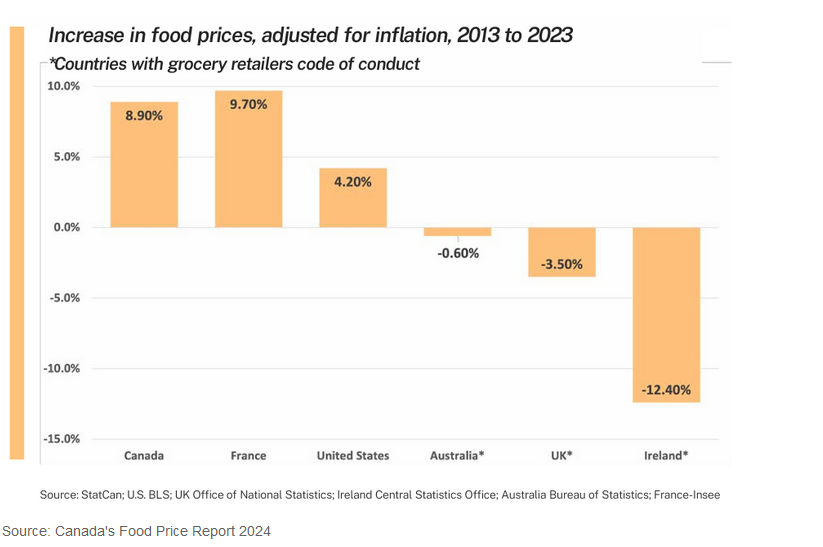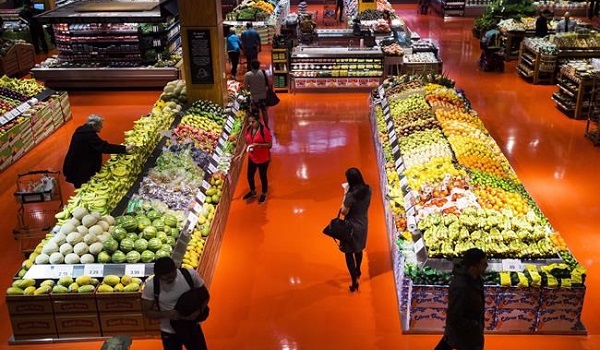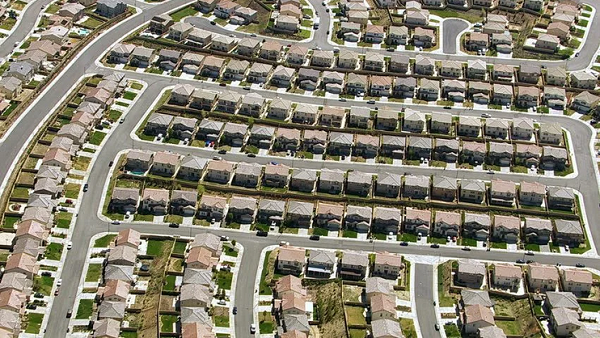As inflation will continue to affect food items in 2024, an average Canadian family may have to pay $700 or more
Grocery prices will continue to climb in 2024, but not as steeply as they did over the past two years, a new report predicts.
The 2024 edition of Canada’s Food Price Report, released Thursday, forecasts food prices will rise by 2.5 to 4.5 per cent next year.
For a family of four, the total grocery bill for the year is expected to be $16,297.20 – up $701.79 from last year, the annual report prepared by the University of Guelph, Dalhousie University, University of British Columbia and the University of Saskatchewan said.
“It’s kind of a good news, bad news situation,” said Kristina Kupferschmidt, a University of Guelph PhD student and one of the report’s authors. “The good news is it’s not increasing as much as it was last year – I know last year was a real crunch for a lot of people. We’re really facing an affordability crisis in Canada. But the bad news is [prices are] still continuing to go up, especially in categories like vegetables, meat and bakery.”
CANADIANS SPENT LESS ON GROCERIES IN 2023 DESPITE INFLATION
In 2023, food prices rose by 5.9 per cent. But in what Kupferschmidt calls one of the report’s “most interesting findings,” Canadians spent less on groceries than the year before.
That suggests shoppers are either buying less food, purchasing lower quality items, or substituting cheaper alternatives, the report said, noting Canadians are feeling the crunch of higher rent and utility costs as well as rising personal debt.

“It’s really like their hands are tied,” Kupferschmidt said. “They’re not able to make the decisions they would want to make if food was more affordable.”
At the same time the number of people using food banks is soaring.
“Those two pieces together I think are really telling of the story that’s happening. People aren’t able to buy food the same way that they have historically,” Kupferschmidt said.
WHY ARE FOOD PRICES INCREASING?
The report found climate change is a major driver behind increasing food costs with erratic weather patterns, droughts, food and fires impacting harvests.
Geopolitics also has an important impact.
“Last year, we saw a major spike in bakery [costs], and it’s believed that it was strongly associated with the Ukrainian war,” Kupferschmidt said.
Energy costs and inflation are also factors.
As for evidence of profiteering by grocery giants, the report cited a report from the Bank of Canada that found while grocery company’s markups rose after COVID-19, the markup was inflationary.
“It’s not to say it isn’t happening, but there’s not data to support that it’s happening right now,” Kupferschmidt said.
A study by Canada’s Competition Bureau found Canada’s three largest grocers – Loblaw, Sobeys, and Metro – collectively reported more than $100 billion in sales and $3.6 billion in profits last year.
The regulator said more competition is needed in Canada’s highly-concentrated grocery industry to help keep prices in check.
Meanwhile the country’s first grocery code of conduct is under development. The authors of the Food Price Report say its imminent introduction “is a momentous development with promising implications for consumers and the industry.”
Countries with similar codes have seen more modest increases in food prices compared to Canada.
This article was reported by CTV News















